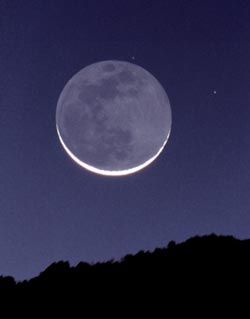
https://youtu.be/i4n5Yj-Gaow
nemesis maturity
Published on Apr 7, 2019
WHAT IS THE DA VINCI GLOW? Five hundred years ago, Leonardo da Vinci proposed an outlandish theory explaining why the Moon's surface glows after lunar nightfall. Turns out, his idea was correct, and this week is a great time to see the "Da Vinci Glow." The Da Vinci Glow--also known as "Earthshine"--makes the entire lunar disk visible even when the sunlit fraction is just a few percent. "It was gorgeous," says Brown. For much of human history, people marveled at the faint image of the full Moon inside the arms of the crescent. Where did it come from? No one knew until the 16th century when Leonardo figured it out. He realized that sunlight reflected from Earth lit up the lunar night. Visualizing this in the 1500s required a wild kind of imagination. No one had ever been to the Moon and looked "up" at Earth. Most people didn't even know that Earth orbited the sun. Copernicus' sun-centered theory of the solar system wasn't published until 1543, twenty-four years after Leonardo died. Wild imagination was one thing Leonardo had in abundance. His notebooks are filled with sketches of flying machines, army tanks, scuba gear and other fantastic devices centuries ahead of their time. In Leonardo's Codex Leicester, circa 1510, there is a page entitled "Of the Moon: No Solid Body is Lighter than Air." He states his belief that the "ghostly glow" is due to sunlight bouncing off Earth's oceans and, in turn, hitting the Moon. 500 years later, we know that Earth's clouds (not oceans) do most of the reflecting; but that is a quibble. Leonardo understood the basics well enough. Go outside tonight and look to the sky. The Da Vinci Glow is waiting.... Clear Skies everyone!






 Sat Mar 23, 2024 11:33 pm by globalturbo
Sat Mar 23, 2024 11:33 pm by globalturbo

